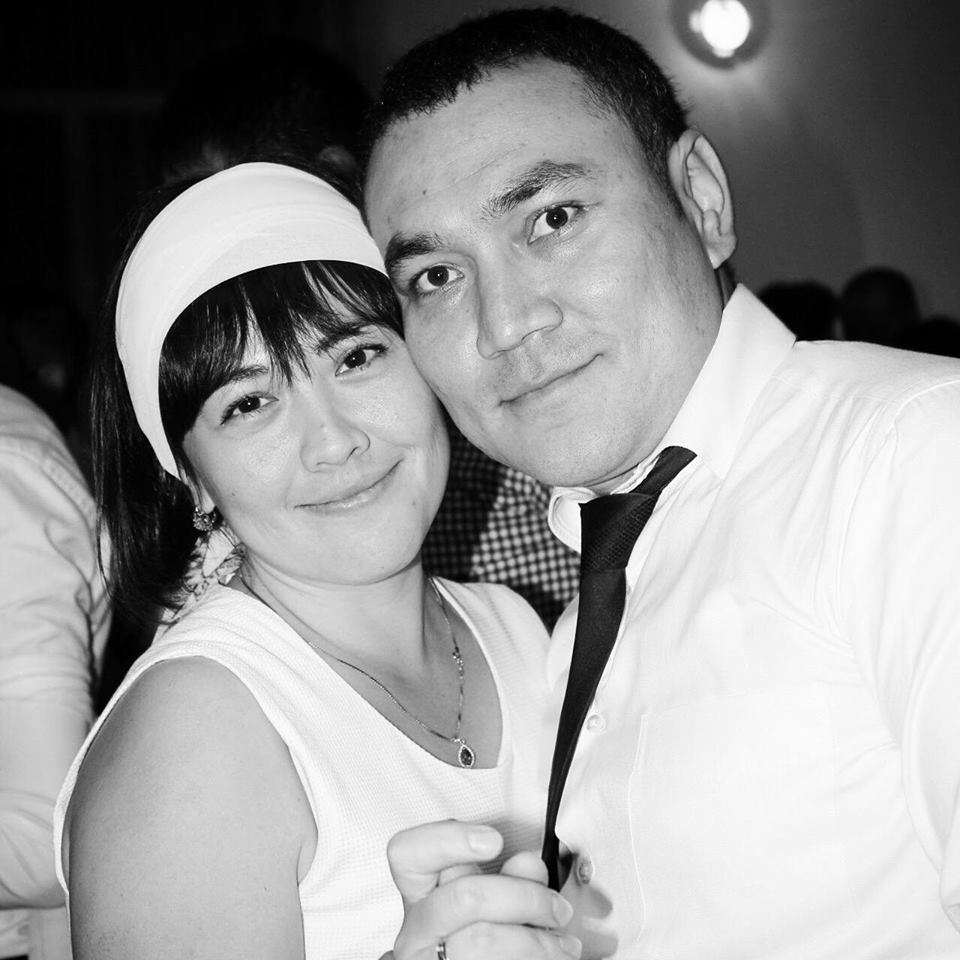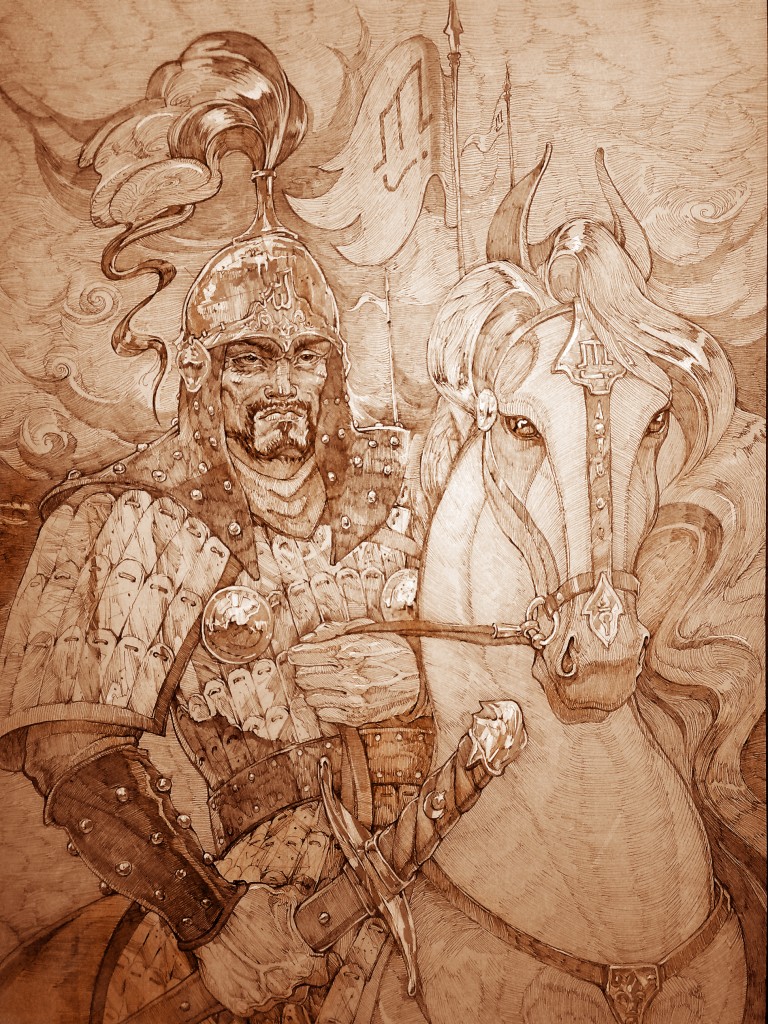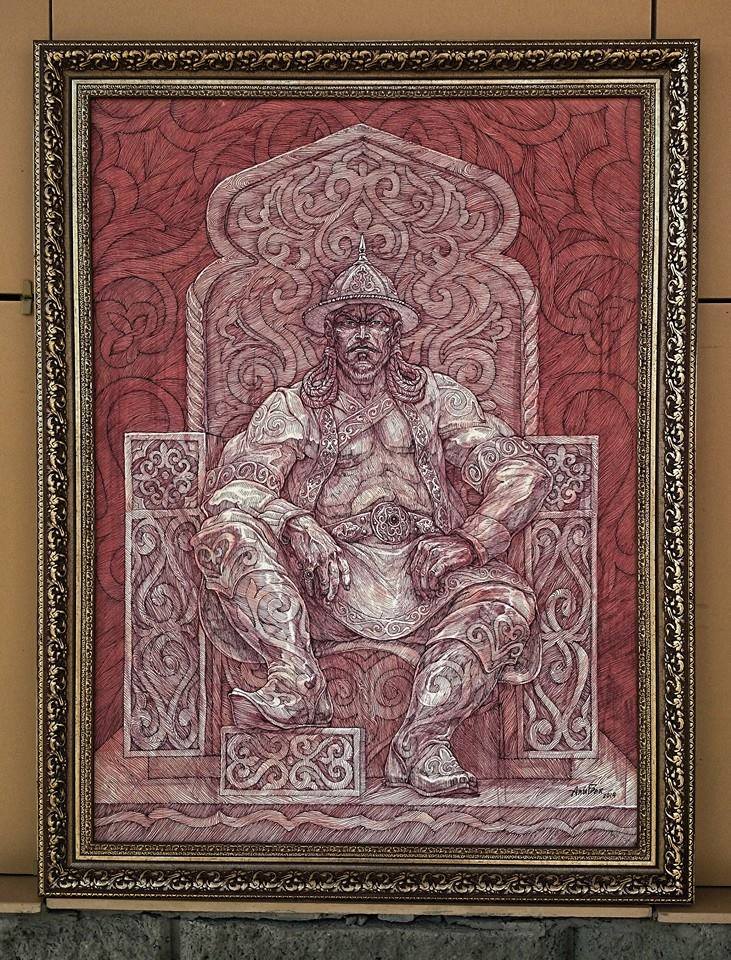ASTANA – Alibek Koylakayev, a leading designer-artist in one of the Astana souvenir companies, has been in Kazakhstan for only two years, but in that time has made a name for himself among local artists through his savvy use of the Internet and his willingness to adapt to changing circumstances.
Born in Russia, Koylakayev found himself drawn to portraying Turkic cultures on paper and canvas, particularly Turkic historical figures. “If the historical person inspires me, I want to draw him. If a lot of people talk about a person, I always wonder why?” the artist said in a recent interview with The Astana Times. “And I start reading about that figure, and why he received his glory. I try not to see other artists’ illustration of that person. I always draw my characters my way, how I feel they looked like.”
Koylakayev has drawn Genghis Khan, Tamerlane, Tomiris, Alexander Nevsky, Alexander the Great, Ivan the Terrible and others.
Koylakayev was born in Nogaisky district, Dagestan, Russia, and started painting when he was three or four years old. His mother and teachers recognised his abilities at an early age, and from six years old, his family supported him by letting him make his ‘messy’ sculptures at home and providing him with necessary materials.
The young artist spent his high school years as the Djemal Art School in Makhachkala, graduating with a first degree diploma. In 2002, at a new stage of his life, Koylakayev left Makhachkala and entered Krasnodar University of Culture and Arts.
The artists in Krasnodar were much more developed than back in Makhachkala, Koylakayev said. He struggled to catch up; some professors thought that his drawing skills were poor. He switched from focusing on graphic design to doing book illustration. In the end, his final work, ‘Nogai steppes,’ was assessed with praise.
It was after that that Koylakayev began to show interest for historical events and great names of history. He came home after graduation, imagining that he would become an art teacher. He also began participating in regional youth forums. Later, he participated in International Youth Forum Seliger. “During those events, I presented my historical works to presidents of republics in Russia. And the feedback was always great. I understood that it is something that is in demand right now,” said he said.
“I have been travelling for two years from one forum or exhibition to another. Of course, I wanted my paintings to be sold. I wanted to earn money. At that time I got married and needed to feed my family,” Koylakayev explained. Organising exhibitions and selling work in Moscow was very challenging, and he found no jobs that would offer him a liveable salary as an artist.
He and his wife moved to Kabardino-Balkaria, where they lived for almost a year. Koylakayev travelled to nearby villages and towns to present his art, and earned money copying them and selling them at cheaper prices than original ones. An artist has got to be flexible if he wants to earn a living, Koylakayev said.
He has also never underestimated the power of Internet, and posts work all the time through social networks and other web services. One day, one of the managers of a Kazakh souvenir-making company saw his works and contacted young talent. She asked him to come Astana.
Now, two years later, Koylakayev works in another Kazakh souvenir company. During this period he has worked in the Turkic Academy as well. And what is the most important – he is happy. “People recognise me here, my artwork is quite popular, I sell them here, I am accepted here,” the artist said.
“This is my life,” Koylakayev said. “I cannot imagine myself doing something else. To tell the truth, I want to make my own brand, I want to promote Turkic culture through clothes and accessories.”
But he remembers when he struggled, not so long ago. “It is very hard to be a young artist both in Russia and Kazakhstan,” Koylakayev said. He thinks that artists should be supported through special national programmes for gifted people. “A lot of artists cannot earn money with their talent. Arts are dying, but they are necessary for people,” he said.
In the end, the artist’s advice to young artists of Kazakhstan and Russia was, “Never doubt yourself. Don’t be shy to show your work. It does not matter whether they are for sale or not. You are showing your time, and someone will understand it. When you do something, do it for your soul, not for money. As for me, the main thing is your inner wealth. When you have it, you can be happy eating only bread and drinking only water.”





